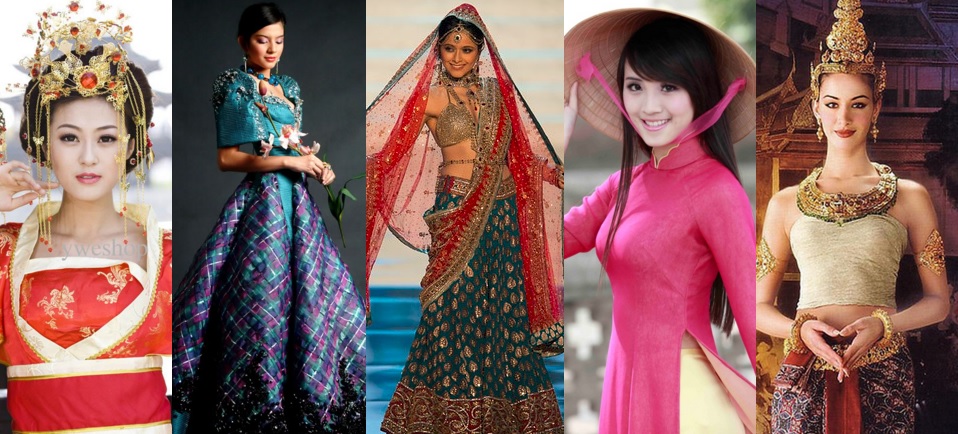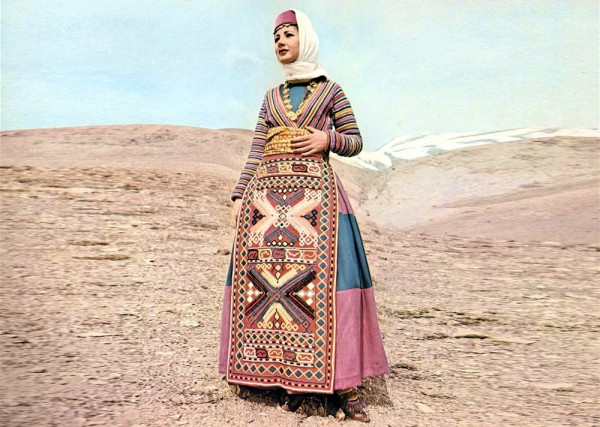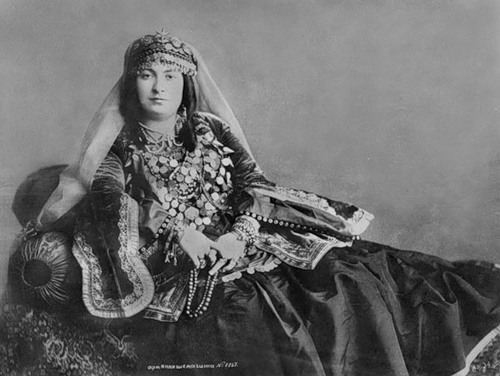THE IMPORTANCE OF NATIONAL COSTUMES
National, traditional costumes of various countries are an important part of their culture. However, with the globalization of cultures and many other exchanges taking place, national costumes seem to be losing their importance.
It is a fact that they have their own uniqueness. They reflect a lot about the history of the country, its culture, traditions. Similar to other national identities, the citizens of a particular nation to have to preserve the value of their national costumes.
As the time passes, people are avoiding to wear national dresses in their routine. They are now more practical, therefore, they look at the comfort of the dress rather than emotions. People mostly go for casual dresses or formal, when at work.
For instance, the national costume of India is “shervani” for men and “sari” for women. Wearing it, however, is time-consuming. Also, it is quite difficult to carry oneself comfortably in it for several hours.
It is sad that national costumes or traditional dresses have lost their importance. Armenians, however, still feel proud when they wear traditional dresses for various events. In international events like Olympics, Miss Universe etc. , each participant represents their country by wearing national costumes.
This, in its place, signifies the value of national costumes and traditional dresses. Also, their place in people’s heart.
Even though the use and preference of national costumes and traditional dresses have reduced over many years, they still are a great source of inspiration for modern fashion and trends. Therefore, it’s right to say that, in the end, they have maintained their importance.
Armenian National Costumes
T A R A Z
Since the ancient times, Armenian Taraz has had aesthetic value. The national costumes of Armenia, or Taraz, reflect the Armenian people’s way of thinking. Not only does it express our identity, but it also one of the main ways of preserving the identity. Taraz has centuries of history. It is rich and diverse as our multifarious language.
We are able to have an idea of the oldest costumes and traditional dresses in the territory of Armenia thanks to the preserved images, ancient art monuments and written sources found during excavations.
During IX – VI centuries BC, on various monuments (frescoes, statues, sculptures, stamps, helmets, shields, etc.) you could see the images of national costumes that belonged to various sections of the population (high class, militaries, priests, ordinary people).
The colors of the four elements dominate in Armenian costumes. According to the 14th-century Armenian philosopher Grigor Tatevatsi, the colors express the following:
The black of the earth, the white of water, the red of the air and the yellow of the flame.
Other than these colors above…
The apricot color symbolizes wisdom and reasonableness. Another meaning for the red color is courage and martyrdom. Blue means heavenly justice, meanwhile, white is for cleanliness.
Taraz, by the way, performs various functions: social, sexual, aesthetic, ritual, erotic, etc. By protecting people from cold or heat, Taraz performed a practical function. By decorating the body, it acquired aesthetic significance.
Aesthetic and erotic functions play a very important role in the costumes and traditional dresses with the tendency to attract the attention of the opposite sex. People have paid special attention to the clothes of a certain age and sex group, especially for the unmarried girls and boys and the bride’s clothing. For the bride, the dress performed a protective function in order to keep her out of the evil forces.
More into the history…
There are archeological materials about the Armenian national costumes. Illustrations and frescos show what they were like in the Van period.
In the records of the Assyrian kings, in the trophies which they took from Urartu, other than livestock, gold and silver jewelry and sculptured stones, they also mention colorful dresses and traditional costumes.
About the garments of the Urartian kings, we are able to get a noteworthy idea thanks to the medallion found in Toprak Kale’s excavations. On the medallion, the costumes were ornate and gorgeous. The patterns were clearly visible. They tended to have square ornaments.
The Armenian ancient historians Agatangeghos, Khorenatsi, Yeghishen, Byzant, Parpetsi prove that Armenian kings, queens, and princesses wore noble dresses with the color of an apricot.
There are also remarks about the pieces and dresses produced in Armenia in foreign sources. For example, Arab traveler of the 9th century, Ibn Haukal wrote about the costumes of Dvin: “In Dabile (Dvin), they made woolen fabrics of fluff, silk garments, and there were no such ones in other countries.”
Unique samples from the Ani and Dvin excavations, paintings on medieval Armenia’s churches and secular structures, and valuable materials in miniature prove that medieval Armenia was developed in carpet weaving, canvas. It was also an important source for those who wanted to explore the ancient Armenian costumes.
In addition, historical circumstances have resulted in the formation of two types of national dresses. That is, western-Armenian and eastern-Armenian costumes.
WESTERN ARMENIAN COSTUMES
The costumes of Western Armenia includes the dresses of Vaspurakan, High-Hayk, Sasoun, as well as the Armenian-populated regions of Cilicia and Small Hayk.
Western Armenia’s costumes are distinguished by their herbal and geometric ornaments, which are present both on women’s and men’s clothing.
There was also high-quality jewelry, which completed the appearance of the costume. Numerous sources state that some designs of Taraz of Western Armenia had a certain impact on the national costumes of Kurds, Assyrians and other neighboring peoples living in Vaspurakan, Aghznik, Turuberan.
It is enough to mention an example of Western Armenia’s costumes to get an idea of the great talent of the Armenians, their aesthetic perceptions, and tastes.
The costumes of the High Hayk (the first province of Mets Hayk) are luxurious and beautiful. They have a beautiful golden embroidery, the apron, the complex decorations for the head, the magnificent and high-end gold and silver jewelry make the costumes even better.
The festive gowns ended in a silky handkerchief like decorations, which gave a special shine to the dress. Some people also wore silk belts with inscriptions.
The photographs kept in the Armenian Genocide Museum-Institute show that the ornaments of Western Armenia have a lot of relations with other spheres of Armenian art: jewelry making, carpet weaving, miniature painting.
Although the traditional Armenian costumes in Western and Eastern Armenia differed, they had various similarities in terms of colors, designs, and meanings.
Traditional Dresses As An Integrity Of The Armenian Culture
This, in its place, confirms the fact that our traditional costumes, as an element of Armenian non-material culture, do not exist separately. It is a whole system which is closely related to a variety of arts.
For example, goldsmiths and silversmiths made the jewelry for the costumes, and the blacksmiths made the ring-shaped ornaments. Lacework and embroidery were one of the main manifestations of costume making.
Each girl mastered this or that tricks of embroidery, from the simplest to the most complex designs. Elders usually were teaching it to them from early childhood. Besides the fact that it was used in everyday life, it was also used in costumes.
The Armenians wore their national costumes till the early 20th century. As a result of the Genocide, we lost this layer of our culture.
GENERAL INFORMATION ON THE NATIONAL COSTUMES
Taraz For Men
The costumes for men consisted of two main components: the “shoulder” (a shirt, a jacket, a fur coat) and a “waist” or the zonal part (trousers). The shirt collars were decorated with embroidery. The clothes mostly were made of cotton fabric. In addition, Western Armenians used the goat’s wool.
Cherkezi was considered a traditional clothing which men wore over their shirts and jackets. The appearance in a public place without Cherkezi was unacceptable, even in hot weather. Armenian men also wore hats of different shapes, usually made of lamb.
Taraz For Women
The outer garment of women was quite varied – dresses, jackets and sleeveless clothes.
The dresses were made of satin, silk, velvet. The women’s clothing was decorated with embroidery, and the high-class women decorated their clothes with gold and silver fibers.
The female ornaments also played an important role in the dress. Jewelry was kept carefully and transmitted from generation to generation.
Women living in the eastern regions of Armenia were wearing under the dresses red and long trousers, the lower parts of which were made of more expensive textiles. Women’s dresses in Western Armenia were almost the same, but they had some differences, as mentioned above.
Necklaces and silver bracelets were also popular decorations.
Embroidery, which was specific to a woman’s costume, besides the aesthetic function, had another, perhaps more important, ritualistic and protective significance. People believed that those who wore it were protected from the evil, harmful influences.
The same function performed also the women’s headscarf. They say it was to protect the owner even from the back of the neck.
Taraz in the Modern Life
Nowadays, one can hardly ever find a person wearing Taraz in their daily life. Although with fashion some national elements and ornaments are being used in the style of the Armenian clothes, it is still obvious that Taraz does no longer play an important role.
Today girls can wear shirts with traditional elements or ornaments. Armenians usually wear Taraz during various national events. The ones who wear are mostly folk and national dance groups. Doesn’t matter where they are, they dance (or even sing) with these beautiful costumes. They also present the Armenian history and the culture to different parts of the world.
The Teryan center produces its own collection of Taraz. One can buy Taraz right from the center. There are exhibitions taking place very often.
The center plays an important role in modern Armenian fashion industry. It is very popular. Many celebrities, singers, and various actors buy or rent costumes from Teryan center. The reasons are different. Mostly for their music videos and films. Sometimes for photo shoots, or just because they want to own one.
A new interesting trend for Armenian youth and families is to have a traditional photo with national costumes. The Teryan center is one of the main providers of the costumes.
The center reached the peak of its popularity especially when the Kardashian sisters visited it. You can see it featured in KUWTK (Keeping up with the Kardashians) reality show.
In addition, the center is situated on Teryan street.
THE FESTIVAL OF NATIONAL COSTUMES
From 2015 Armenian people organize one of the most important festivals for the nation and also for the foreigners.
The Yerevan Municipality and Teryan Cultural Center are the organizers. The idea of organizing Taraz Festival belonged to Teryan Cultural Center.”The Yerevan Taraz Fest” first took place at the Northern Avenue in Yerevan in 2015.
There are many pavilions. The well-known Megerian Carpet-Museum has its own pavilion. They show the patterns of the costumes together with carpets. They show their meanings as well. Marashlyan Photo Atelier also owns a pavilion. There you will have the chance to take a picture in national costumes.
The famous Nani-Zani doll’s shop gives the guests the opportunity to see the unique collection of dolls wearing Armenian costumes. To make the atmosphere even more traditional, the Armenian folk song and dance ensembles also give a concert.
During the Armenian Taraz festival, people present Armenian national costumes and accessories, as well as various national dances, songs, puppet performances.
During the festival, one can see not only traditional costumes but also modern ones with national costume elements. There are certain pavilions visiting which you can find all the new trends of fashion with the Taraz elements. The participants show the traditional Armenian dresses and the modern costumes which include national elements.
The organizer mentioned that all people, without any age limits, can participate in the festival. The event is for those people who own a national costume and want to exhibit it. As well as those who can perform ethnic songs and poems.
“Our main idea is to show the national costume. The jury will then evaluate the costume together with its ornaments; every ornament has to be in accordance with our traditions”, he added.
The application deadline, in addition, is on August 20.
Best Armenian designers exhibit their works which have traditional elements of Taraz
According to Emil Markosyan (a public figure, the idea of the festival also belongs to him), 5 professional designers already applied for participation with their own collection. Other 127 applicants include people from various areas of Armenia. Diaspora also participates.
The competition consists of three rounds, the last one takes place on September 15 in Hakob Paronyan theatre.
“There is a lot of interest towards the festival. This means that it will become annual”, Markosyan said.
The aim of this festival is to show the Armenian culture and also, to maintain the national values of Armenia. It also owns a special place in the life of Yerevan. At this festival, The History Museum shows the national costumes of different regions of Historical Armenia. People can see ancient pictures, also, they can listen to historical reviews about the costumes.
In the end, Taraz reflects the history of the nation and their culture. So, this festival is a great opportunity to go back to the roots and at the same time to introduce the old Armenian traditions in a new way.
Do not miss your chance to be part of this amazing festival, where you can know more about ancient Armenia’s culture and history.






































Leave a Comment